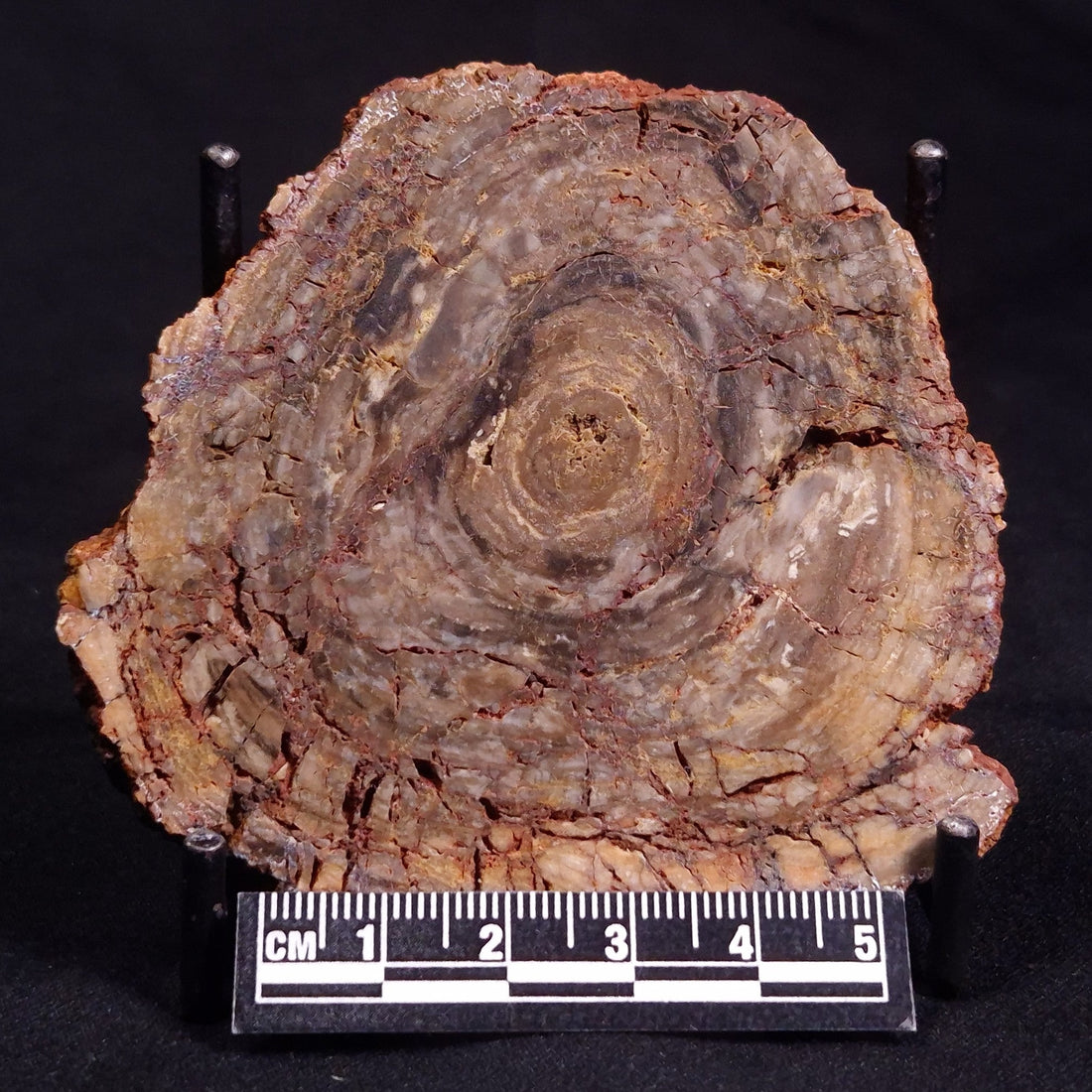
Fossil Stromatolites: Conophyton basalticum and Conophyton amantourartensis
Share
Stromatolites are layered sedimentary structures formed by ancient microbial mats—primarily cyanobacteria—that trapped and bound sediment in shallow marine environments. These formations represent some of the earliest evidence of life on Earth, dating back over 3.5 billion years. Among the many stromatolite genera, Conophyton stands out for its steep, conical morphology and its importance in biostratigraphy. Two notable species—Conophyton basalticum from Australia and Conophyton amantourartensis from Morocco—offer a unique glimpse into microbial ecosystems across vastly different geological periods and settings.
Crystal World currently stocks specimens of both species, making these scientifically significant fossils accessible to researchers, educators, and collectors.
What Is Conophyton?
Conophyton is a genus of fossil stromatolites characterised by sharply conical, laminated structures. These fossils are typically found in carbonate or volcanic-associated sedimentary rocks and are used as biostratigraphic markers in Precambrian and Cambrian sequences. Their formation reflects microbial activity in shallow marine settings, where cyanobacteria built layered biofilms that gradually mineralised over time.
Conophyton basalticum (Australia)
-
Geological Age: Cambrian (~541–485 million years ago)
-
Location: Antrim Plateau Volcanics, near Katherine, Northern Territory
-
Formation Context: Found in basaltic units, indicating microbial colonisation of volcanic terrains in shallow marine settings
-
Morphology: Steep-sided, cone-shaped stromatolite with fine lamination
-
Scientific Significance:
-
Demonstrates microbial life thriving in volcanic coastal environments
-
Serves as a biostratigraphic marker for Cambrian sequences in northern Australia
-
Offers insight into post-Ediacaran microbial resilience and ecological expansion
-
-
Availability: Crystal World stocks polished specimens of Conophyton basalticum, showcasing its distinct structure and geological context
Conophyton amantourartensis (Morocco)
-
Geological Age: Late Neoproterozoic (Ediacaran, ~635–541 million years ago)
-
Location: Upper Tachgagalt Formation, Ouarzazate Province, Souss Massa Draa region
-
Described By: Raaben, 1980
-
Formation Context: Found in carbonate-rich sedimentary layers deposited in ancient shallow seas
-
Morphology: Conical stromatolite with well-defined laminae, indicative of cyanobacterial mat growth in stable marine conditions
-
Scientific Significance:
-
Represents microbial ecosystems preceding the Cambrian explosion
-
Provides evidence of widespread cyanobacterial activity in North Africa during the Ediacaran
-
Useful for correlating Neoproterozoic sedimentary sequences across continents
-
-
Availability: Crystal World stocks specimens of Conophyton amantourartensis, offering access to rare Ediacaran fossils from Morocco
Comparative Insights
These two species illustrate the ecological breadth of Conophyton, thriving in both volcanically active and carbonate-rich environments. Their preservation across disparate geological settings and timeframes highlights the global distribution of microbial life and its role in shaping early sedimentary systems.
| Feature | Conophyton basalticum | Conophyton amantourartensis |
|---|---|---|
| Geological Age | Cambrian (~541–485 Ma) | Late Neoproterozoic (Ediacaran, ~635–541 Ma) |
| Location | Northern Territory, Australia | Ouarzazate Province, Morocco |
| Host Formation | Antrim Plateau Volcanics | Upper Tachgagalt Formation |
| Lithology | Basaltic flows with sedimentary interbeds | Carbonate-rich sedimentary rocks |
| Morphology | Steep conical laminae | Conical laminae with fine preservation |
| Paleoenvironment | Volcanic coastal marine | Stable shallow marine |
| Biostratigraphic Utility | Cambrian marker in Australia | Ediacaran marker in North Africa |
Why These Stromatolites Matter
Both Conophyton basalticum and Conophyton amantourartensis are crucial for understanding the evolution of early life and the environmental conditions of ancient Earth. Their distinct ages and geological settings allow scientists to compare microbial ecosystems across time and continents. These fossils also serve as biostratigraphic markers, helping to date and correlate sedimentary rock layers globally.
Their availability through Crystal World provides a rare opportunity to purchase and appreciate these ancient structures first hand.
Shop Conophyto Basalticum Here
Shop Conophyton Amantourartensis Here